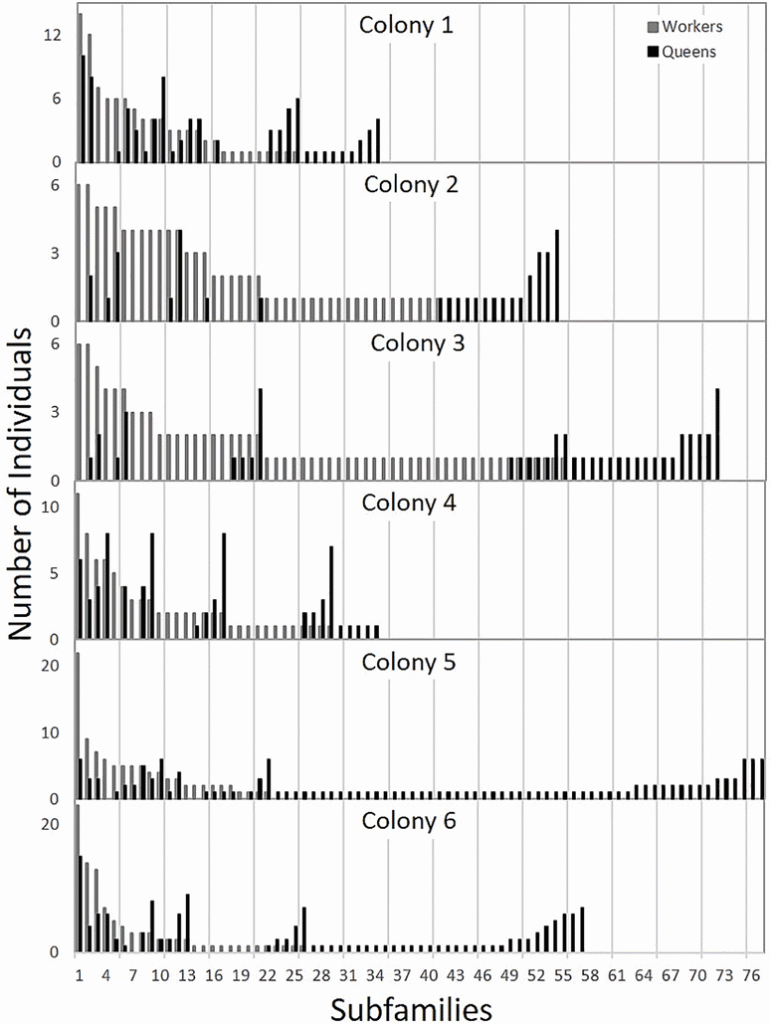Gavin Ramsay
Honey bee virgin queens mate with many different drones. The sperm is mixed then stored and produces identifiable ‘patrilines’ in the queen’s daughters. It has been generally accepted that 10-20 drones are involved and generate as many lines in the workers produced by each queen.
For some time, it has been known that ‘regular’ colony reproduction, via swarming or supersedure, creates daughter queens carrying the same range of patrilines as found in their sister workers in similar frequencies. This all seemed as it should be. Then researchers started using emergency queen cells to investigate this in more detail and that is where the neat story starts to unravel.
For more than 20 years now we have known that emergency queen cell production does something different to ‘unforced’ daughter queen production: the workers use less common patrilines to make emergency queens. Why there should be selection for rare patrilines in emergency queen production remains a mystery.
In 2018 James Withrow and David Tarpy published a paper, ‘Cryptic “royal” subfamilies in honey bee (Apis mellifera) colonies’, which has caused a lot of people to stop and think. In this study they go into more detail about the emergency queen cells generated from six colonies. Not only have they repeated the previous work that suggests emergency queen cells are preferentially made from rare patrilines compared to workers, but that these rare patrilines are often (40% of the time) undetected in the large (about 90) sample of workers taken from each colony. They detected a total of up to 77 different patrilines in each colony, considering both worker and emergency queen genotypes.
One of their figures is repeated here. It shows, for six colonies, how many workers (grey) or queens (black) came from each patriline. At the right side of the graph are patrilines exclusively discovered in emergency queens.

This demonstrates that virgins mate with many more drones that we used to think. It also shows that the workers making emergency queens are selecting very unusual patrilines. This has real practical impacts on the bee breeding which many of us are undertaking, assuming that these findings apply as much to Apis mellifera mellifera as to other types of honey bee.
- In normal situations, single queens mate with many more drones than previously thought. This implies that greater numbers of drone colonies may be needed to maintain normal colony and population diversity.
- There is hidden diversity in colonies headed by single queens. Grafting or natural swarm cell production may tap into one set of genetic variation whereas including the deliberate generation of emergency queen cells from a breeder queen may significantly expand the diversity passed on to the next generation.
The paper is freely available: https://journals.plos.org/plosone/article?id=10.1371/journal.pone.0199124
And an excellent review and discussion has been provided by SNHBS member David Evans: https://theapiarist.org/whos-the-daddy/
